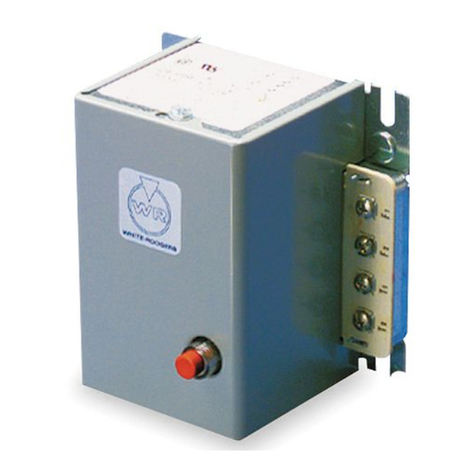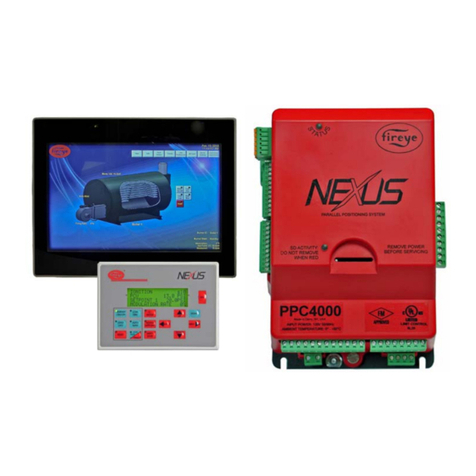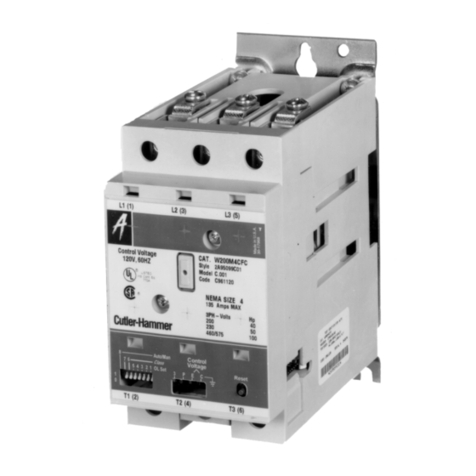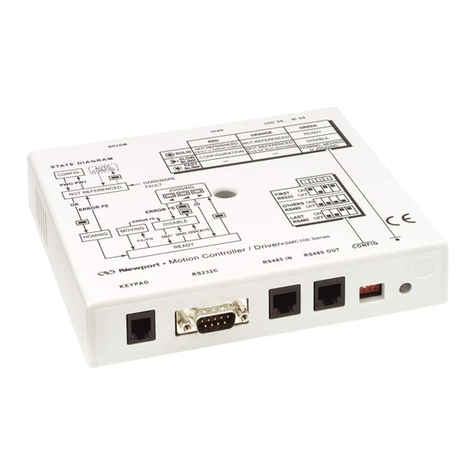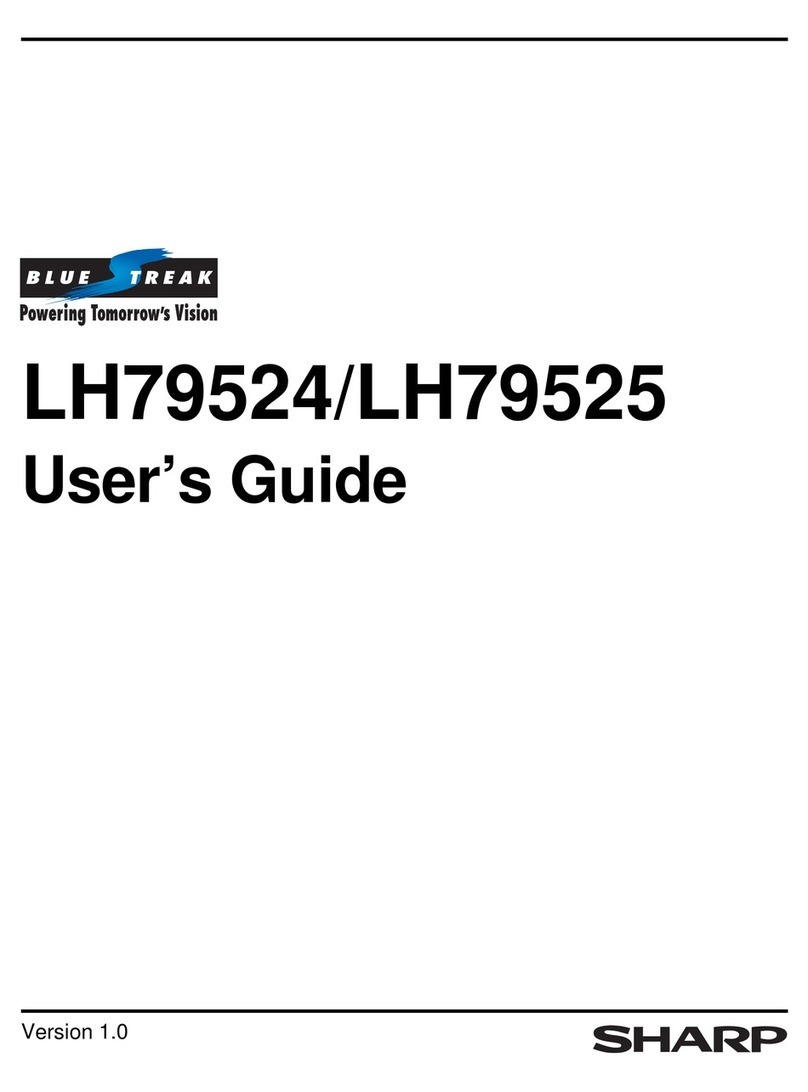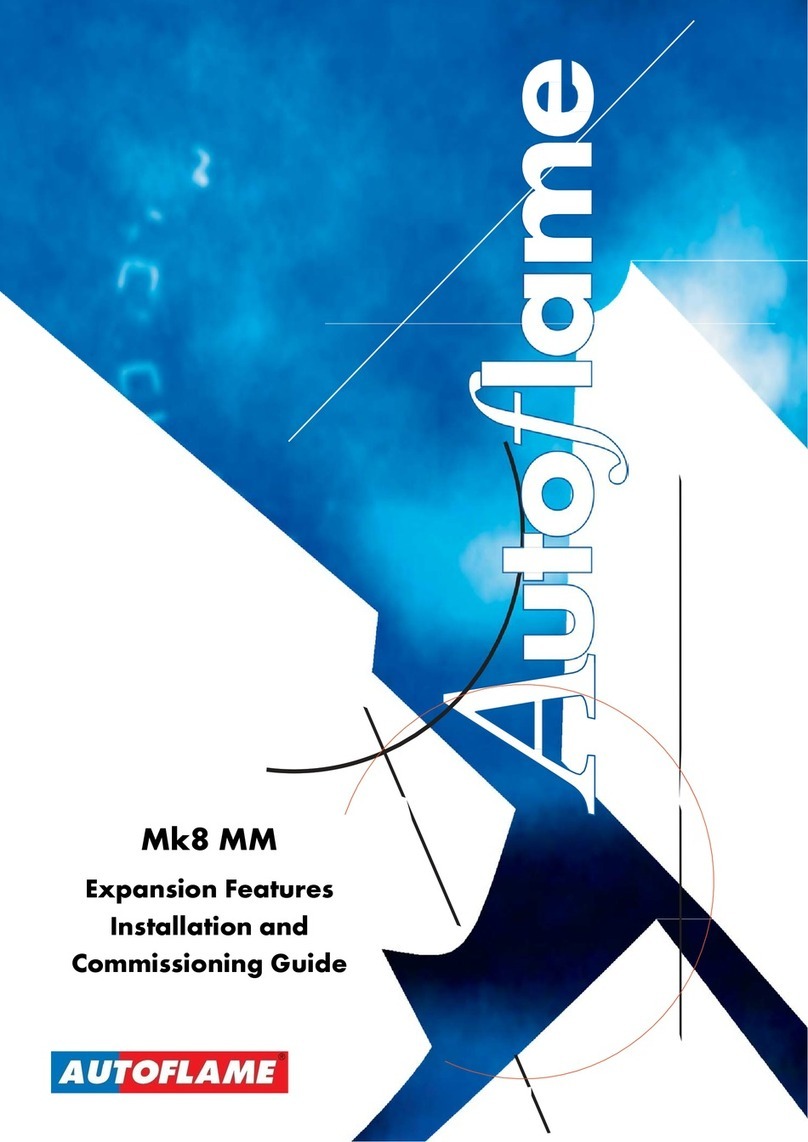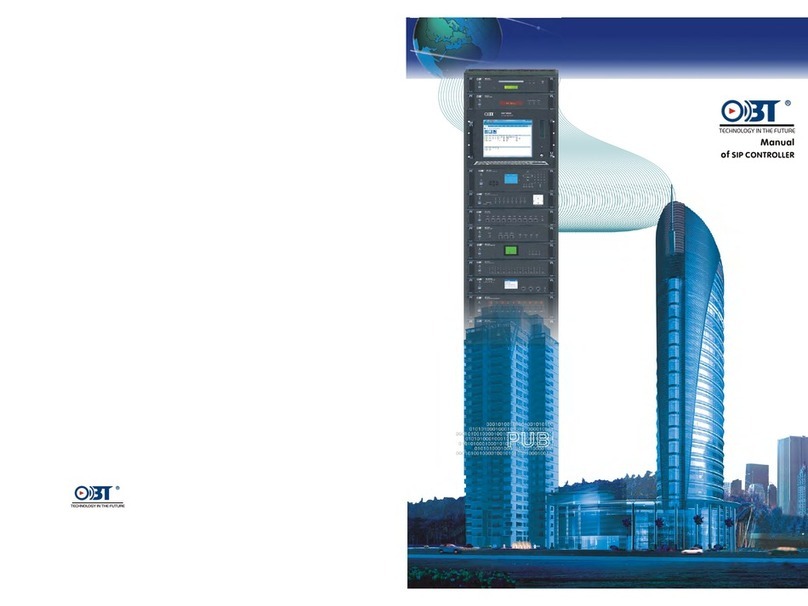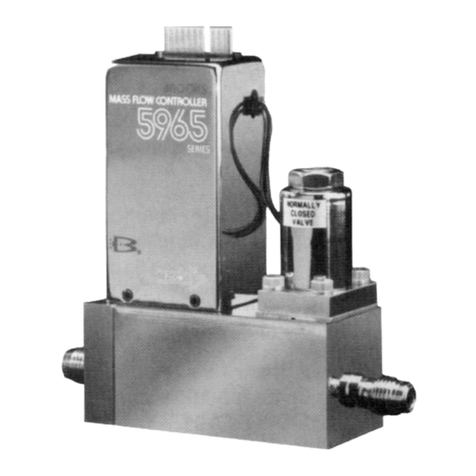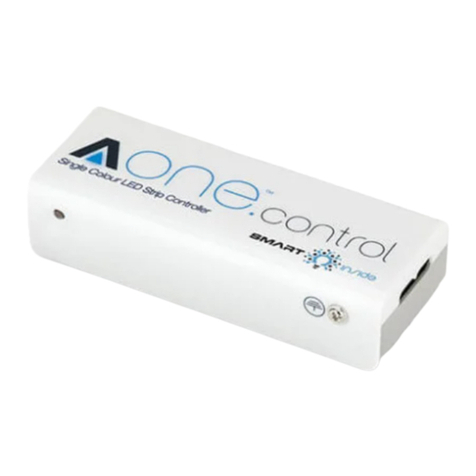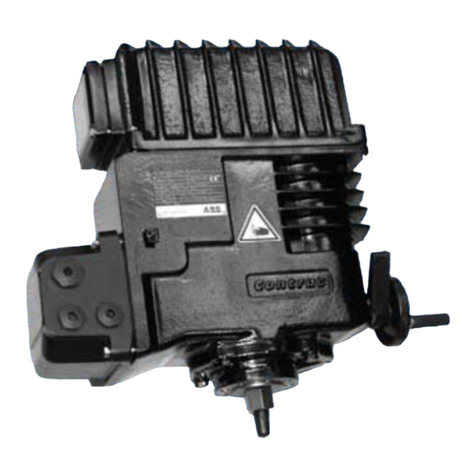Fluke Calibration RUSKA 7250 User manual

PN 3952213
November 2010, Rev. 1, 11/11
© 2010 – 2011 Fluke Corporation. All rights reserved. Printed in USA. Specifications are subject to change without notice.
All product names are trademarks of their respective companies.
RUSKA 7250, 7250i,
7250xi & 7250LP
Pressure Controller/Calibrator
Users Manual
Provided by:
(800) 404-ATEC
Advanced Test
Equipment Corp.
®www.atecorp.com
Rentals • Sales • Calibration • Service

LIMITED WARRANTY AND LIMITATION OF LIABILITY
Each Fluke product is warranted to be free from defects in material and workmanship under normal use and
service. The warranty period is one year and begins on the date of shipment. Parts, product repairs, and
services are warranted for 90 days. This warranty extends only to the original buyer or end-user customer of
a Fluke authorized reseller, and does not apply to fuses, disposable batteries, or to any product which, in
Fluke's opinion, has been misused, altered, neglected, contaminated, or damaged by accident or abnormal
conditions of operation or handling. Fluke warrants that software will operate substantially in accordance
with its functional specifications for 90 days and that it has been properly recorded on non-defective media.
Fluke does not warrant that software will be error free or operate without interruption.
Fluke authorized resellers shall extend this warranty on new and unused products to end-user customers
only but have no authority to extend a greater or different warranty on behalf of Fluke. Warranty support is
available only if product is purchased through a Fluke authorized sales outlet or Buyer has paid the
applicable international price. Fluke reserves the right to invoice Buyer for importation costs of
repair/replacement parts when product purchased in one country is submitted for repair in another country.
Fluke's warranty obligation is limited, at Fluke's option, to refund of the purchase price, free of charge repair,
or replacement of a defective product which is returned to a Fluke authorized service center within the
warranty period.
To obtain warranty service, contact your nearest Fluke authorized service center to obtain return
authorization information, then send the product to that service center, with a description of the difficulty,
postage and insurance prepaid (FOB Destination). Fluke assumes no risk for damage in transit. Following
warranty repair, the product will be returned to Buyer, transportation prepaid (FOB Destination). If Fluke
determines that failure was caused by neglect, misuse, contamination, alteration, accident, or abnormal
condition of operation or handling, including overvoltage failures caused by use outside the product’s
specified rating, or normal wear and tear of mechanical components, Fluke will provide an estimate of repair
costs and obtain authorization before commencing the work. Following repair, the product will be returned to
the Buyer transportation prepaid and the Buyer will be billed for the repair and return transportation charges
(FOB Shipping Point).
THIS WARRANTY IS BUYER'S SOLE AND EXCLUSIVE REMEDY AND IS IN LIEU OF ALL OTHER
WARRANTIES, EXPRESS OR IMPLIED, INCLUDING BUT NOT LIMITED TO ANY IMPLIED WARRANTY
OF MERCHANTABILITY OR FITNESS FOR A PARTICULAR PURPOSE. FLUKE SHALL NOT BE LIABLE
FOR ANY SPECIAL, INDIRECT, INCIDENTAL, OR CONSEQUENTIAL DAMAGES OR LOSSES,
INCLUDING LOSS OF DATA, ARISING FROM ANY CAUSE OR THEORY.
Since some countries or states do not allow limitation of the term of an implied warranty, or exclusion or
limitation of incidental or consequential damages, the limitations and exclusions of this warranty may not
apply to every buyer. If any provision of this Warranty is held invalid or unenforceable by a court or other
decision-maker of competent jurisdiction, such holding will not affect the validity or enforceability of any other
provision.
Fluke Corporation
P.O. Box 9090
Everett, WA 98206-9090
U.S.A.
Fluke Europe B.V.
P.O. Box 1186
5602 BD Eindhoven
The Netherlands
11/99
To register your product online, visit register.fluke.com

7250 – Change Language
Hold key for 5 seconds
mode
enter
gkn001.eps


i
Table of Contents
Chapter Title Page
1 General Information ............................................................................ 1-1
Introduction........................................................................................................ 1-1
How to Contact Fluke ........................................................................................ 1-1
Safety Information ............................................................................................. 1-2
Resuscitation.................................................................................................. 1-2
Symbols Used in this Manual ............................................................................ 1-3
General Information........................................................................................... 1-3
Features.............................................................................................................. 1-3
Fused-Quartz Bourdon Tube Technology ..................................................... 1-3
Mercury-Free ..................................................................................................... 1-3
NIST Traceability .............................................................................................. 1-3
Universal Power Supply .................................................................................... 1-4
Measure While Control ................................................................................. 1-4
Friendly Display ............................................................................................ 1-4
Adjustable Pressure Display.......................................................................... 1-4
Ease of Operation .......................................................................................... 1-4
Modular Design ............................................................................................. 1-4
Attractive Desktop Packaging ....................................................................... 1-4
Power-On Self Test ....................................................................................... 1-4
Ease of Calibration ........................................................................................ 1-4
Automatic Zero Adjust .................................................................................. 1-4
Automatic Head Correction........................................................................... 1-5
Choice of Medium......................................................................................... 1-5
Choice of Display Units ................................................................................ 1-5
Communications Interface............................................................................. 1-5
Standard Equipment and Options ...................................................................... 1-5
2 Theory of Operation ............................................................................ 2-1
Introduction........................................................................................................ 2-1
Power Supply..................................................................................................... 2-1
Electronics Module ............................................................................................ 2-2
Back-Plane Board.......................................................................................... 2-2
Microprocessor Board ................................................................................... 2-2
Digital Control Board .................................................................................... 2-3

RUSKA 7250, 7250i, 7250xi & 7250LP
Users Manual
ii
IEEE–488 Interface ....................................................................................... 2-3
Front Panel..................................................................................................... 2-3
Pneumatics Module............................................................................................ 2-4
Measure Mode Pneumatics............................................................................ 2-6
Reference Port........................................................................................... 2-6
Test Port .................................................................................................... 2-6
Vent Procedure.......................................................................................... 2-7
Control Mode Pneumatics ............................................................................. 2-7
Pressure Supply Port ................................................................................. 2-7
Vacuum Supply (Exhaust) Port................................................................. 2-7
Pressure Control ........................................................................................ 2-7
Control Strategy................................................................................................. 2-7
Inner vs. Outer Loops .................................................................................... 2-7
Normal Mode................................................................................................. 2-8
Fast Mode ...................................................................................................... 2-8
Alignment of Inner Loop with Outer Loop ................................................... 2-8
PID Control ................................................................................................... 2-8
Transducer Module ............................................................................................ 2-9
Quartz Bourdon Tube Sensor (Transducer01)............................................... 2-9
Sensor Board ................................................................................................. 2-10
Linearization Term ........................................................................................ 2-10
Auxiliary Sensors .......................................................................................... 2-11
Case Reference Vacuum Sensor.................................................................... 2-11
Software............................................................................................................. 2-11
Software Safety Controls............................................................................... 2-11
Preventing Operator Errors ....................................................................... 2-11
Pneumatic Errors....................................................................................... 2-11
Shut Offs ................................................................................................... 2-11
Oven Control............................................................................................. 2-11
Pressure Reading and Correction .................................................................. 2-12
Zero Coefficients....................................................................................... 2-12
Range Coefficients .................................................................................... 2-13
3 Installation ........................................................................................... 3-1
Introduction........................................................................................................ 3-1
Unpacking the Calibrator................................................................................... 3-1
Cautions ............................................................................................................. 3-2
Powering Up the Calibrator ............................................................................... 3-2
Observing the Calibrator’s Full Scale Rating .................................................... 3-3
Pneumatic Connections...................................................................................... 3-3
Pressure Supply Port...................................................................................... 3-3
Exhaust Port................................................................................................... 3-3
Absolute Models............................................................................................ 3-3
Test Port ........................................................................................................ 3-3
Reference Port ............................................................................................... 3-4
Vacuum Sensor—Option............................................................................... 3-5
4 Local Operation ................................................................................... 4-1
Introduction........................................................................................................ 4-1
Numeric Keypad............................................................................................ 4-1
Function Keys................................................................................................ 4-1
Rotary Knob .................................................................................................. 4-1
Cancel, Previous ............................................................................................ 4-2
Tutorial .............................................................................................................. 4-3

Contents (continued)
iii
Selecting Language ....................................................................................... 4-5
Selecting Mode of Operation......................................................................... 4-5
Simulated Absolute Instruments ............................................................... 4-6
Absolute with Evacuated Reference—Optional for
RUSKA 7250 & 7250i only...................................................................... 4-6
Main Menu......................................................................................................... 4-6
Controlling Pressure .......................................................................................... 4-7
Setting the Pressure Set-Point ....................................................................... 4-7
Entering/Exiting Control Mode ..................................................................... 4-7
Vent.................................................................................................................... 4-8
Step/Jog.............................................................................................................. 4-8
Stepping......................................................................................................... 4-8
Setting Step Size............................................................................................ 4-8
Jogging .......................................................................................................... 4-8
Menu .................................................................................................................. 4-8
Menu | Setup.................................................................................................. 4-9
Menu | Setup—Limits ............................................................................... 4-9
Menu | Setup—User .................................................................................. 4-12
Menu | Setup—Units................................................................................. 4-14
Menu | Setup—Remote ............................................................................. 4-15
Menu | Setup—System.............................................................................. 4-16
Menu | Calibrate ............................................................................................ 4-17
Calibration Password ................................................................................ 4-17
Zeroing ...................................................................................................... 4-17
Menu | Program—Storing A Sequence in Memory....................................... 4-18
Preparing to Program ................................................................................ 4-18
Entering a New Program........................................................................... 4-19
Automatically Generating a Program........................................................ 4-20
Changing the Name of a Program............................................................. 4-21
Changing an Existing Program ................................................................. 4-22
Changing the Configuration Stored with a Program................................. 4-22
Running a Program ................................................................................... 4-23
Menu | Test .................................................................................................... 4-24
Menu | Test—Sweep Test ......................................................................... 4-25
Menu | Test—Self Test ............................................................................. 4-25
Menu | Test—Remote Test ....................................................................... 4-26
Menu | Test—Shop1.................................................................................. 4-26
Menu | Test—Control................................................................................ 4-26
Menu | Display............................................................................................... 4-27
Menu | Display—Blank............................................................................. 4-27
5 Remote Operation ............................................................................... 5-1
Capabilities ........................................................................................................ 5-1
IEEE-488 ....................................................................................................... 5-1
RS-232........................................................................................................... 5-2
Remote/Local Operation.................................................................................... 5-2
Configuration ..................................................................................................... 5-2
Device Messages................................................................................................ 5-3
SCPI Command Format ................................................................................ 5-3
SCPI Response Format.................................................................................. 5-3
ANSI/IEEE 488.2-1987 Command Summary............................................... 5-4
SCPI Command Summary ............................................................................ 5-4
Example SCPI Commands ............................................................................ 5-6
SCPI Status Registers .................................................................................... 5-7
6005 Interface Panel Emulation......................................................................... 5-9

RUSKA 7250, 7250i, 7250xi & 7250LP
Users Manual
iv
Serial Operation ................................................................................................. 5-9
Druck DPI-510 Emulation Command Summary............................................... 5-9
Supported Commands ................................................................................... 5-9
Response Formats.......................................................................................... 5-10
Reset Conditions............................................................................................ 5-10
Notes.............................................................................................................. 5-10
Format ....................................................................................................... 5-10
Zeroing ...................................................................................................... 5-10
Rate ........................................................................................................... 5-10
Units .......................................................................................................... 5-11
Sample Programs ............................................................................................... 5-11
Sample Program 1 - 7250 GPIB (IEEE-488) ................................................ 5-11
Sample Program 2 - 7250 GPIB (IEEE-488) ................................................ 5-13
Sample Program 3 - 7250 Serial (RS-232).................................................... 5-16
Sample Program 4 - QBASIC ....................................................................... 5-19
6 Maintenance......................................................................................... 6-1
Introduction........................................................................................................ 6-1
Observing the Software Version Number.......................................................... 6-1
Preventive Maintenance..................................................................................... 6-1
Initiating the RUSKA 7250’s Self Test......................................................... 6-1
Removing the Calibrator’s Cover.................................................................. 6-2
Moisture Filter ............................................................................................... 6-3
Particle Filters................................................................................................ 6-3
Vacuum Pumps.............................................................................................. 6-3
Processor Battery........................................................................................... 6-3
Calibration ......................................................................................................... 6-3
Calibration Instructions ................................................................................. 6-4
Preparation ................................................................................................ 6-4
Storing the Coefficients............................................................................. 6-6
Vacuum (Negative Gauge) Calibrations........................................................ 6-7
Barometric Reference Calibration - Simulated Absolute .............................. 6-8
Vacuum Sensor Calibration—Optional Case Reference Sensor ................... 6-8
Editing the Calibration Coefficients .............................................................. 6-9
Zeroing .......................................................................................................... 6-10
Gauge and Vacuum (Negative Gauge) Instruments.................................. 6-10
Permanent Absolute Instruments .............................................................. 6-11
RPT—Simulated Absolute Instruments.................................................... 6-12
Sensor Photocell Zeroing................................................................................... 6-12
Mechanical Zero of the RUSKA 7250xi ........................................................... 6-14
Optimizing Control ............................................................................................ 6-15
Fan Operation .................................................................................................... 6-16
System Software Update Procedure................................................................... 6-17
RUSKA 7250 Controller Software Upgrade ..................................................... 6-18
Replacement Parts.............................................................................................. 6-18
Cleaning............................................................................................................. 6-19
7 Preparation for Storage & Shipping .................................................. 7-1
Introduction........................................................................................................ 7-1
Disconnecting the RUSKA 7250 ....................................................................... 7-1
Packing Instructions........................................................................................... 7-1
Shipping Instructions ......................................................................................... 7-4
Appendices
A Summary of Specifications ......................................................................... A-1
B Summary of Error Messages ....................................................................... B-1

v
List of Tables
Table Title Page
1-1. Symbols.................................................................................................................. 1-3
1-2. RUSKA 7250 Options List .................................................................................... 1-5
2-1. Conversion Factors................................................................................................. 2-3
2-2. Solenoid Valves States........................................................................................... 2-5
3-1. General Specifications and Parameters .................................................................. 3-2
6-1. Electronics Self Test .............................................................................................. 6-2
6-2. RUSKA 7250 Parts ................................................................................................ 6-18
6-3. RUSKA 7250 Additional Parts .............................................................................. 6-19

RUSKA 7250, 7250i, 7250xi & 7250LP
Users Manual
vi

vii
List of Figures
Figure Title Page
2-1. Calibrator Block Diagram ...................................................................................... 2-1
2-2. RUSKA 7250 Gauge Pneumatics Diagram............................................................ 2-4
2-2. Model 7250 DPC Gauge Pneumatics Diagram, 5 to 2500 psig
(34 kPa to 17.2 MPa) Full Scale Ranges................................................................ 2-4
2-3. RUSKA 7250 Absolute Pneumatics Diagram to 50 PSIA (340 kPa) FS............... 2-5
2-4. RUSKA 7250 Absolute Pneumatics Diagram 3000 PSIA (20.7 MPa) FS ............ 2-5
2-5. Pressure Control ..................................................................................................... 2-9
2-6. Shaft/Magnet Section ............................................................................................. 2-10
2-7. Photocell/Light Spot............................................................................................... 2-10
2-8. Menu | Display - Menu........................................................................................... 2-12
3-1. RUSKA 7250 Back Panel ...................................................................................... 3-5
4-1. RUSKA 7250 Front Panel...................................................................................... 4-1
4-2. Menu Tree .............................................................................................................. 4-2
4-3. Main Menu ............................................................................................................. 4-3
4-4. Units Menu............................................................................................................. 4-4
4-5. Entering Pressure in the Main Menu...................................................................... 4-4
4-6. Control Mode in Main Menu ................................................................................. 4-5
4-7. Mode Menu ............................................................................................................ 4-6
4-8. Functions in Main Menu ........................................................................................ 4-7
4-9. Configurations in Menu ......................................................................................... 4-9
4-10. Menu l Setup - Menu.............................................................................................. 4-9
4-11. Menu l Setup l Limits - Menu ................................................................................ 4-10
4-12. Menu | Setup | User - Menu.................................................................................... 4-12
4-13. Menu | Setup | Units - Menu .................................................................................. 4-14
4-14. Menu | Setup | Units | Edit Name - Menu............................................................... 4-15
4-15. Menu | Setup | Remote - Menu............................................................................... 4-15
4-16. Menu | Setup | System - Menu ............................................................................... 4-16
4-17. Menu | Program - Menu ......................................................................................... 4-19
4-18. Menu | Program | Edit - Menu................................................................................ 4-20
4-19. Menu | Program | Edit | Auto - Menu ..................................................................... 4-21
4-20. Menu | Program | Edit | Name - Menu.................................................................... 4-21
4-21. Menu | Program | Edit - Menu................................................................................ 4-22
4-22. Menu | Program | Config - Menu ........................................................................... 4-23
4-23. Menu l Program l Run - Menu ............................................................................... 4-24
4-24. Menu | Test - Menu ................................................................................................ 4-24

RUSKA 7250, 7250i, 7250xi & 7250LP
Users Manual
viii
4-25. Menu | Test | Sweep - Menu................................................................................... 4-25
4-26. Menu | Test | Remote - GPIB Menu & Serial1 Menu ............................................ 4-26
4-27. Menu | Test | Shop1 - Menu ................................................................................... 4-26
4-28. Menu | Test | Controller - Menu............................................................................. 4-27
4-29. Menu l Display - Menu .......................................................................................... 4-27
6-1. Menu | Test | Self - Menu....................................................................................... 6-2
6-2. Menu | Calibration.................................................................................................. 6-4
6-3. Vacuum Calibration ............................................................................................... 6-7
6-4. Zeroing Menu......................................................................................................... 6-11
6-5. Zero Set .................................................................................................................. 6-11
6-6. Photocell Zeroing Menu......................................................................................... 6-13
6-7. Centering the Photocell .......................................................................................... 6-13
6-8. Correct Adjustment of Photocell Centering Bar .................................................... 6-14
6-9. Photocell Location ................................................................................................. 6-14
6-10. Menu | Test | Control - Menu ................................................................................. 6-15
6-11. Auto-Tune Menu.................................................................................................... 6-16
6-12. Menu | Test | Shop 1 - Menu .................................................................................. 6-17
7-1. Packing the RUSKA 7250...................................................................................... 7-3

1-1
Chapter 1
General Information
Introduction
This manual contains operation and routine and preventive maintenance instructions for
the RUSKA 7250, 7250i, 7250xi and 7250LP Pressure Controller/Calibrator (Calibrator)
manufactured by Fluke. The manual will refer to all model numbers of the instrument
listed above generically as the Calibrator. Therefore, the information contained in the
manual will be applicable to all of the models of the 7250 unless it denotes that the
information is only applicable to a specific model number. This section of the manual
provides general information about the 7250 and presents its features and options.
How to Contact Fluke
To contact Fluke Calibration, call one of the following telephone numbers:
•Technical Support USA: 1-877-355-3225
•Calibration/Repair USA: 1-877-355-3225
•Canada: 1-800-36-FLUKE (1-800-363-5853)
•Europe: +31-40-2675-200
•Japan: +81-3-6714-3114
•Singapore: +65-6799-5566
•China: +86-400-810-3435
•Brazil: +55-11-3759-7600
•Anywhere in the world: +1-425-446-6110
To see product information and download the latest manual supplements, visit Fluke
Calibration’s website at www.flukecal.com.
To register your product, visit http://flukecal.com/register-product.

RUSKA 7250, 7250i, 7250xi & 7250LP
Users Manual
1-2
Safety Information
In this manual, a Warning identifies conditions and procedures that are dangerous to the
user. A Caution identifies conditions and procedures that can cause damage to the
Product or the equipment under test.
XWWarning
To prevent possible electrical shock, fire, or personal injury:
•Carefully read all instructions.
•Use the Product only as specified, or the protection
supplied by the Product can be compromised.
•Replace the mains power cord if the insulation is damaged
or if the insulation shows signs of wear.
•Do not use and disable the Product if it is damaged.
•Do not touch voltages >30 V ac rms, 42 V ac peak, or
60 V dc.
•Use this Product indoors only.
•Do not use the Product around explosive gas, vapor, or in
damp or wet environments.
•Make sure the ground conductor in the mains power cord is
connected to a protective earth ground. Disruption of the
protective earth could put voltage on the chassis that could
cause death.
•Use only the mains power cord and connector approved for
the voltage and plug configuration in your country and rated
for the Product.
WCaution
•Electrostatic discharge sensitive (ESDS) applies to low
power, solid-state parts which could be damaged or
destroyed when exposed to discharges of static electricity.
Maintenance personnel are often not aware that an ESDS
part has been damaged or destroyed because electrostatic
discharges at levels less than 4,000 volts cannot be seen,
felt, or heard.
Resuscitation
Personnel working with or near dangerous voltages shall be familiar with modern
methods of resuscitation. Such information may be obtained from your local American
Medical Association.

General Information
Symbols Used in this Manual 1
1-3
Symbols Used in this Manual
Symbols used on the Calibrator and in this manual are explained in Table 1-1.
Table 1-1. Symbols
Symbol Description
PThis equipment meets the requirements of
all relevant European safety directives.
The equipment carries the CE mark.
JEarth Ground
WImportant Information: refer to manual
XShock Hazard
~Do not dispose of this product as unsorted
municipal waste. Go to Fluke’s website for
recycling information.
General Information
The RUSKA 7250 uses force-balanced, fused-quartz Bourdon tube technology to provide
the precise measurement of pressure. During normal operation, the Calibrator performs in
either Measure mode or Control mode.
In Control mode, the Calibrator simultaneously measures and controls pressure. Control
mode is commonly used in the calibration and testing of pressure gauges, transducers,
pressure switches, and production pressure instruments.
In Measure mode, the Calibrator measures pressure. Typically, Measure mode
applications are found in research laboratories, wind tunnel testing, power plant testing,
and bubbler tank volume accountancy systems. It is also used to monitor barometric
pressures, vacuum systems, and differential pressure devices.
Features
The following features are available on all RUSKA 7250 Calibrators.
Fused-Quartz Bourdon Tube Technology
Featuring 1 - 2500 psi full scale ranges. RUSKA’s force-balanced, fused-quartz Bourdon
tube sensor makes use of the stability, high elasticity, low hysteresis, and excellent
fatigue strength of fused quartz. This time-proven technology eliminates the need for gear
trains, bearings, shafts, and other moving parts that can wear out or introduce hysteresis
or deadband into the process.
Mercury-Free
All components in the Calibrator are mercury-free.
NIST Traceability
All Calibrators are calibrated per ANSI/NCSL Z-540-1-1994 using RUSKA deadweight
gauges that are directly traceable to the National Institute of Standards and Technology
(NIST) and are provided with NVLAP accredited calibration certificates.

RUSKA 7250, 7250i, 7250xi & 7250LP
Users Manual
1-4
Universal Power Supply
The Calibrators’s universal power supply accepts AC voltages between 100 - 240 VAC.
To “reconfigure” the Calibrator for use in another country, the user simply changes the
power cord.
Measure While Control
The Calibrator simultaneously digitally displays the commanded pressure, the actual
pressure, and the difference between the two. A bar graph indicates how close the actual
pressure is to the commanded pressure, as well as how close the commanded pressure is
to the Calibrator’s full scale pressure.
Friendly Display
The Calibrator’s color active matrix TFT display combines a bright, low-glare readout
with a wide viewing angle. During normal operation, the measured pressure is easily
visible from a distance of 10 feet (3 meters).
Adjustable Pressure Display
The pressure display may be adjusted to show one decimal greater than or less than the
default resolution.
Ease of Operation
An intuitive, menu-driven interface makes the Calibrator easy to use. Frequently used
selections such as the units of measure are restored to memory each time the Calibrator
powers up.
Modular Design
The sensing element, pneumatics, electronics, and user interface are separated into
modules, making maintenance faster and easier.
Attractive Desktop Packaging
A sturdy aluminum case houses all of the Calibrator’s pneumatics, electronics, and user
controls. With the optional rack mount kit, this standard 19" EIA chassis fits easily into a
rack mount system.
Power-On Self Test
Upon power-up, the Calibrator quickly tests its hardware and software. After the
Calibrator completes this test, the user can select more extensive self-tests for the
pneumatics and electronics.
Ease of Calibration
Calibration may be performed either remotely or entirely from the front panel. No
disassembly is required, and there are no potentiometers to tune. On single sensor units,
only a three-point calibration is required to fully characterize the instrument. On
instruments that integrate multiple ranges such as the 7250i and 7250xi, additional
calibration points are required.
Automatic Zero Adjust
At the user’s request, the Calibrator’s software automatically performs the zero
adjustment, with no potentiometers to tune.

General Information
Standard Equipment and Options 1
1-5
Automatic Head Correction
The Calibrator automatically corrects for head pressure between the Calibrator and the
device under test (DUT), taking into account the density of the test gas; e.g., air or
nitrogen.
Choice of Medium
Although the Calibrator is not sensitive to the type of gas used within the system, the user
can select either instrumentation air or nitrogen, allowing the Calibrator to automatically
make pressure head corrections.
Choice of Display Units
Standard units include inHg at 0 °C and 60 °F, kiloPascals, bars, psi, inH2O at 4 °C,
20 °C, and 25 °C, kilograms per square centimeter, mmHg, cmHg at 0 °C, and cmH2O at
4 °C. Altitude and airspeed units include feet, meters, knots, and kilometers per hour. In
addition to these predefined units, four user-defined units are programmable.
Communications Interface
The RUSKA 7250 includes standard RS-232 serial and IEEE-488 interfaces. The user’s
computer communicates with the Calibrator through the Standard Commands for
Programmable Instruments (SCPI) protocol. The RUSKA 7250 shares the same protocol
as the RUSKA 7010, 7215, 7215i and 7215xi, therefore, it can operate from software
written for any of these products. The RUSKA 7250 can also be configured to accept
existing software written for the RUSKA Series 6000 Digital Pressure Gauge/Controller
or the Druck model 510.
Standard Equipment and Options
A standard RUSKA 7250 includes this manual and a power cord. Although the standard
RUSKA 7250 is fully functional with just these items and the appropriate pressure and
vacuum supplies, the following options are also available.
Rack Mount Kit: This 6.969" kit meets ANSI/EIA requirements for a 4U, 19" rack
mount kit.
Additional Power Cords: Additional power cords are available for most countries.
All options are summarized in Table 1-2 to order these items, please contact Fluke.
Table 1-2. RUSKA 7250 Options List
Option Part Number
LabView Driver (National Instruments) Downloadable from World Wide Web
Rack Mount Kit - Cabinets 18-24 inches
(45.7 - 61.0 cm) deep 3879677
Vacuum Pump 115/230 VAC 50/60 Hz 3917819
Power Cord - USA, Canada 284174
Power Cord - Central Europe 769422
Power Cord - India, Japan 782771, 3898323
Power Cord - Australia/New Zealand 658641

RUSKA 7250, 7250i, 7250xi & 7250LP
Users Manual
1-6

2-1
Chapter 2
Theory of Operation
Introduction
The Calibrator’s power supply, electronics, pneumatics, and sensor combine to form a
complete, stand-alone, measure and control instrument. This Chapter of the manual
describes the Calibrator’s component modules and provides a general discussion of each.
IEEE-488
RS -232
Electronic Module
AC
POWER
FRONT
PANEL
IEEE
CARD
MICROPROCESSOR
BOARD
POWER
SUPPLY
BACKPLANE
BOARD DIGITAL
CONTROL
BOARD
INNER LOOP
SENSOR
Primary Transducer Module
Photo
Sensor
TUBE
CASE SENSOR
BOARD
SENSOR
Pneumatics Module
Reference Port
Test Port
Supply Pressure Port
Exhaust Port
PNEUMATICS
gkn002.eps
Figure 2-1. Calibrator Block Diagram
Power Supply
The Calibrator’s universal power supply accepts AC voltages from 100-120 / 220-240
VAC at 50/60 Hz, single phase. This quad–output supply produces +5 VDC, +/-12 VDC,
and 24 VDC which are distributed to the Control and Backplane Boards.

RUSKA 7250, 7250i, 7250xi & 7250LP
Users Manual
2-2
Electronics Module
Back-Plane Board
The Back-plane Board is used to interconnect all of the plug-in electronic boards and
distribute power. The Microprocessor Board, the Digital Control Board, and the
IEEE-488 Interface all plug into the Back-plane Board. The Front Panel communicates
with the Microprocessor Board via cables. The Sensor Board communicates with the
Microprocessor board through an internal RS-485 serial communication bus.
Microprocessor Board
All of the Calibrator’s software resides in nonvolatile, programmable, read-only memory
(Flash EPROM) on the Microprocessor Board, which plugs directly into the Back-plane
Board. This software contains all of the instructions that operate the Calibrator, as well as
the conversion factors that the Calibrator uses to translate the internal pressure
unit-of-measure of kPa into the units selected by the user. These factors are given in
Table 2-1.
Data that is subject to change after the Calibrator leaves the factory are held in
electrically erasable, programmable, read-only memory (EEPROM). This includes the
current units of measure, the coefficients from the zeroing process, the current pressure
medium, calibration coefficients, and the conversion factors for the four user-defined
units of measure.
When the Calibrator powers up, its software is loaded into random access memory
(RAM), also on the Microprocessor Board. At the same time, the values stored in
EEPROM Board are restored to memory.
Another important component on the Microprocessor Board is the lithium battery. The
battery continuously updates the Calibrator’s date and time, even when the unit is
powered down. This battery has a varying life. If the instrument is left on 24 hours a day,
it may last 5 to 10 years. If the instrument is stored, it may only last one year.
The Microprocessor Board also supports the RS-232 serial interface that allows the user’s
computer to communicate with the Calibrator.
This manual suits for next models
3
Table of contents

